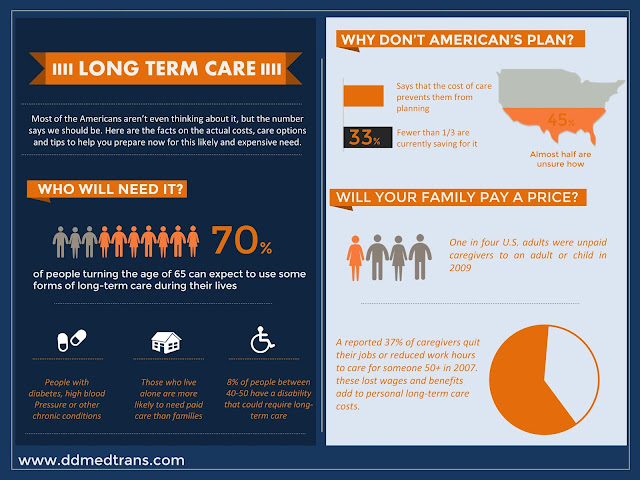Long-term care refers to medical and non-medical needs of chronicle ill
or disables people. It is common for long-term care to provide custodial and
non-skilled care to people, who are eligible for long-term care and assistance
support.
 |
| Long-term Care Infographic |
In the older concept of senior/aged care system, it includes only
providing assistance support without any skilled program and except medical
equipment to prevent uncertain events and causalities. But now the increasingly
chronic conditions associated with older population and senior citizens or some
other physical challenged situations changes the scope of a long-term care
service system. Nowadays, various new programs and policies implemented by
providing proper support to the senior peoples and people with physically challenged
situations. And it should need to be implemented to encouraging the health of
the citizens as well as improving the health sectors. Non-Emergency Medical Transportation
(NEMT) is one of them. It helps the patient to move from point A to point B
with assistive staff and equipped medication tools.
Now, long term care requires expertise and skilled services for older
population to deliver effective health care services. Formally, a long-term
care facility includes professional health care support, personal care, home
health services, and assisted living services. Due to modernization, a few
services involved in this program, and that is non-emergency medical
transportation, wheelchair accessible transportation, air ambulance support and
ambulatory support services. Long-term care services include long-term
assistance as well as support for performing routine tasks without the
occurrence of any causality. Non-emergency medical transportation enables the
accessibility for completing various routine tasks with the help of the
qualified member of NEMT, which takes cares of patient’s health and supports
the daily life.
No comments:
Post a Comment